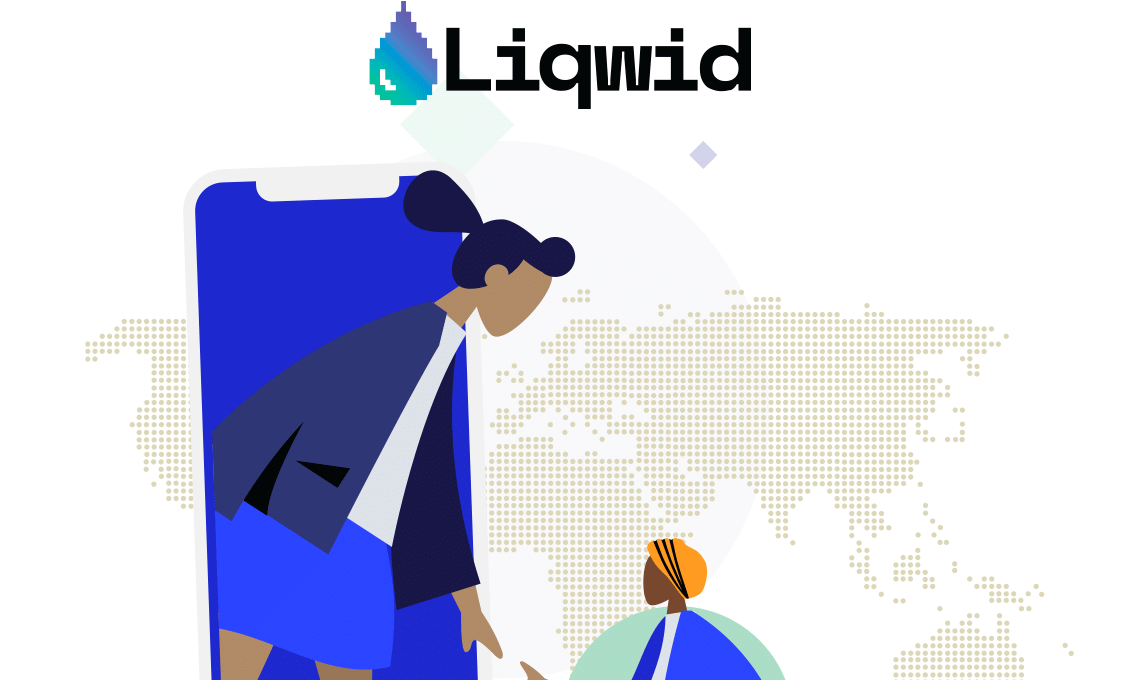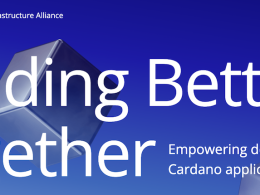Everyone has their eye on the crypto world in recent times, and the number of advancements have been significant. One of the most innovative blockchains among the lot is Cardano. This decentralized, blockchain-based system is powered by the ADA which supports on the Cardano network. As the first peer to peer transaction system that was based on copious amounts of scientific research, Cardano has all the transactional properties of Bitcoin with the promise of more refined Smart Contract capabilities of Ethereum and then some.
With a lot of innovations that can shape the future of Cardano, Project Catalyst has afforded the opportunity for the Cardano community to join hands in creating a framework, bridging the gap between ideas and real-world projects. One such proposal is the Liquid Cardano DeFi Liquidity Pool Proposal. Let us delve into the current issues with CeFi and DeFi, the Liqwid protocol, details of the Liquidity Pool Proposal, and how it can revolutionize Cardano and DeFi for years to come.
Problems Faced by Borrowers in DeFi and CeFi Borrowing Options
Some of the most common problems faced by borrowers and lenders in the existing Centralized Finance (CeFI) and Decentralized Finance (DeFi) options for crypto include:
- High interest rates and predatory lending schemes on existing CeFi apps
- A mispriced cost of money in DeFi protocols
- A lack of proof of identity does not allow users to rack up credit scores. This means they have no incentive, which implies a higher chance of default. In order to cover this, existing apps use high interest rates and overcharge them to maintain a feeling of security.
- There is no system in place to identify a user’s previous history, which means that good quality borrowers do not get lower interest rates.
All these issues call for the implementation of a protocol that supports users in their quest for the right crypto-based loans.
What is the Liqwid Protocol?
Liqwid is on the way to building an automated liquidity protocol in order to incorporate credit scoring algorithms with Decentralised IDs. This would establish a lending pool and allow smart contract-based markets that run on the Cardano blockchain.
The interest rates are calculated algorithmically based on the existing market conditions. Instead of pairing lenders and borrowers, Liqwid protocol combines the user assets into a liquidity pool. Each lender is given a ratio of qTokens when they deposit their asset into the market.
What are qTokens?
qTokens in the Liqwid protocol are an interest-bearing asset. This is given to each lender who deposits their asset, and the qToken represents the asset deposited and the interest value. qTokens are Cardano native assets, which means they can be easily used in any decentralized apps (dApps) which have qToken support.
The advantage here is that the pool of user assets provides a much higher rate of liquidity, and assets can be withdrawn at any point without waiting for maturity.
The lender’s qToken gives them the right to the asset, it becomes something like an increasing exchange rate. Earning your interest is as simple as having a qToken.
Features of Liqwid Protocol
- Users can earn interest on deposits. Once users deposit their assets into the Liqwid market, they can earn algorithmically calculated interest with just one transaction confirmation. This gives users an incentive to add to the liquidity pool.
- With nearly zero fees for borrowing, users get to borrow assets from the pool using interest rates that are calculated by algorithms. Since these fees are based on the current supply and demand, it is obvious that despite zero negotiations, this is the best interest rate available in the market currently.
- Developers can build interest and liquidity into their apps. They also have the ability to launch innovative new products on top of the Liqwid openstack software that is available to all.
- Liqwid protocol is decentralized and controlled by no one. The autonomous functionality is capable of attracting high liquidity and low-interest rates, powered by the Cardano blockchain platform.
All these features make it an interesting proposal that could revolutionize the Cardano platform while allowing users to make use of it to avail loans by placing their assets as collateral. With the decentralized nature of this platform, it is by far the best solution to avail credit, as the liquidity pool ensures that there is always credit available for the borrower.
How is the Interest Rate Calculated
“Money robots” form the cornerstone of defining the interest rates in this protocol. The core functionality of the Liqwid market, therefore, is to optimize the algorithms to calculate the rates of interest. This is applied across borrowers and is updated dynamically to reflect the supply and demand in the current market conditions.
This means that lenders and borrowers will no longer have to negotiate terms of the contract or interest rates. In times of high liquidity, the algorithm develops lower interest rates in order to encourage borrowers. In times of lower liquidity, the money robots offer higher interest rates to encourage repayments on the part of the borrowers and more asset deposits by lenders.
In addition to this, the emission rate is engineered in such a way that long term liquidity providers, i.e those who provide assets for a longer time, will be better rewarded. This ensures a healthy amount of liquidity in these pools. This would therefore lead to readily available funds and easier loans.
Since everything is algorithmically developed, you do not have to worry about having to negotiate, as you will undoubtedly be getting the Best interest rates. Lenders do not have to wait till maturity to withdraw their assets, as the pool will ensure that funds of the borrower do not dry up.
What is Liqwid’s Proposal?
Liqwid proposes a complete financial ecosystem based on crypto-economics. Lending and borrowing have been a part of any financial and currency market. It allows lenders to earn interest rates on assets that they are not currently using, while borrowers can utilize assets for immediate purposes. Borrowers repay since it improves their credit score and helps them get better rates with a good score along with other benefits.
While this is fairly common with traditional financial services, decentralized finance (DeFi) is still in the development phase. DeFi users now do not have many options when it comes to building online credit scores. Liqwid is seeking to support this by way of liquidity pools.
What Liqwid’s Liquidity Pools Aim to Change
With this idea, there are a lot of changes that can be bought about to the existing system:
- Competitive interest rates can now be availed by borrowers, who do not have to engage in collateral sales.
- An optimal earn rate for lenders based on the volume and demand of borrowers in the current market
- Developers are free to build borrowing into their Cardano dApps. They can use Liquid markets to build into the existing apps, or even build entirely new dApps with the help of Liqwid’s open APIs and SDK in place.
- Financial incentives will encourage both borrowers and lenders to contribute to the protocol and its future in a positive manner.
- There is no longer the need to engage in long negotiations regarding maturity periods, interest rates and market conditions.
- The future voting power of the protocol lies with LiqwiDAO members who supply liquidity. This includes developers, liquidity providers and so on. It involves a robust voting setup, the ability to modify the interest rate models, list new qTokens, new strategies and so on.
These are a few positive changes that will make the peer-to-peer lending process much easier on the Cardano platform.
Liqwid Products That Will Form the System
Liqwid Pools
Unlike traditional models, Liqwid proposes a lending model where all lender assets are combined into a LiqwidPool. This ensures a much better liquidity than the regular matched lending practice. It also allows lenders to withdraw assets at any point in time without waiting for a maturity period.
They are issued qTokens as explained above, and the ownership rights of qToken mean an increase in the ownership of underlying Cardano native assets. Holding a token makes you eligible for interest in your asset, as per the time value calculations of the algorithm. This gives lenders enough incentive to keep their assets in the pool for longer, as this means better returns in the long run.
Efficiency will increase with the implementation of decentralized identifiers and a credit scoring algorithm that changes the score dynamically with each transaction. This opens up a world of possibilities with the users having the power to monetize data, ideas, and illiquid assets into its digital equivalent. Values are determined in a trustless process that is completely decentralized in nature as well.
Liqwid Ramps
Liqwid Ramps will aim to provide users with cash on ramps, helping digital currency holders in web2 or web3 cash on ramps. Using the integration of Liqwid Ramps with existing CeFi digital wallets will help the users to debit the digital CeFi balance into Liqwid Pool.
The user can now earn interest based on the algorithmically calculated rates that depend on the supply and demand levels at the time. Protocol ownership and the governances in place can incentivize developers to build the Liqwid ramps into existing CeFi applications and bridges into digital wallet apps similar to Venmo.
Liqwid qCredit Scores
Liqwid proposes to use Atala Prism in order to ensure that users can transparently verify identities, without compromising their privacy. With these scores in place, the borrower can avail lower costs of origination fees up to 0.
The delegation feature can help to vouch for a borrower if it is within a personal network.
It will also make it a higher-cost process for default or liquidated borrowers. This will greatly encourage the practice of healthy lending, while borrowers have more incentive to repay on time in order to boost their qCredit score and get better rates the next time around.
In conclusion, Liqwid Cardano DeFI Liquidity Pool Proposal is a wonderful way to facilitate easy lending on the Cardano platform. It allows everyone to get a good rate of interest and maintains liquidity so that borrowers have an easier time accessing funds. With the credit scores and token system in place, it also facilitates a trustless process that promotes better repayments and is advantageous for those who make timely payments.
The open-source nature of this project ensures that anyone from the community can add features or constantly improve the peer-to-peer lending network. This is exactly why this project won the United Nations Blockchain for Social Good challenge, as it seeks to disrupt the existing financial systems in place, trying to make it available to all.
With the tradeoffs that exist in the current CeFi and DeFi systems, there are major opportunity costs, risk of security, and repayment issues that could give pain points. There is no system in place to analyze or give a solid factor that determines the default risk of borrowers, and this gives rise to interest rates that are priced inappropriately. As Liqwid shows, this does not have to be the case.
If you’d like to know more information or have questions/comments regarding Liqwid’s liquidity pool proposal, check out the link provided: https://cardano.ideascale.com/a/dtd/Liqwid-Cardano-DeFi-Liquidity-Pools/333395-48088










